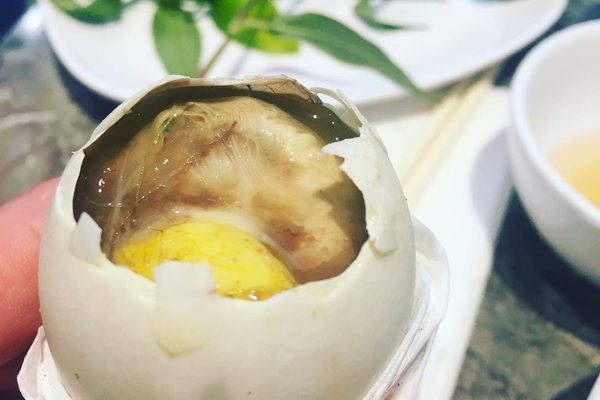Even when presented with the telltale signs of a bánh pía, with its cream-colored crust and vibrant red stamp, it’s difficult to know exactly what might meet the tongue upon first bite. A Vietnamese-Chinese mishmash, bánh pía is the uniquely flaky and sometimes pungent mooncake brought to Vietnam by way of immigrating Teochew Chinese.
Traditionally, mooncakes are Chinese pastries with a baked outer crust that surrounds red bean or lotus seed paste. Sometimes featuring a salted egg yolk center, they are especially prevalent during the Mid-Autumn Festival when they are shared as gifts with family and friends.
Unlike more traditional mooncakes (of which there are myriad forms across China), bánh pía is made with at least two kinds of dough (one water-based, one oil-based), which get folded and flattened together in a manner similar to puff pastry. When baked, the dough forms a thin outer layer that wraps around a denser and chewier crust. Inside the Chinese-cum-Vietnamese bun, culinary cultures mingle: caramelized lard, a common feature of Chinese mooncakes, might meet a pungent hit of soft durian, or the sweet chewiness of coconut might accompany mung bean paste or taro. On top of all this, many bánh pía hide an unctuous mouthful of salty egg yolk, giving the quartered cake a bright-yellow interior reflective of the glowing full moon that the festival celebrates.
The calling card of this special mooncake remains its flaky edible crust and soft, creamy inside, and while the adventurous may not mind a little mystery in their mouth, label-lovers will find solace in the cake’s customary painted red design, which can gives clues as to the tasty surprise inside.
Written By
 Leigh ChavezBush
Leigh ChavezBush
















